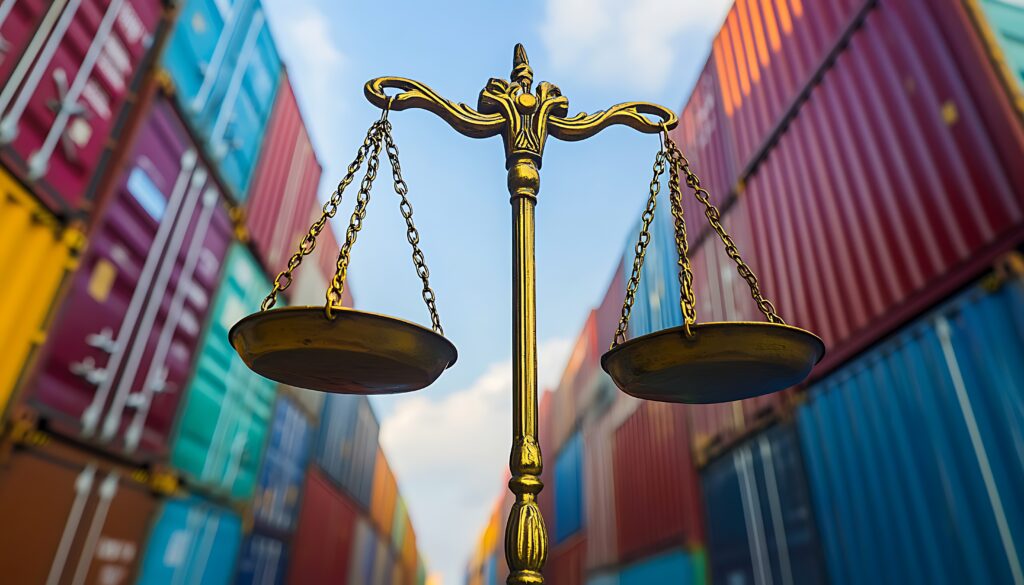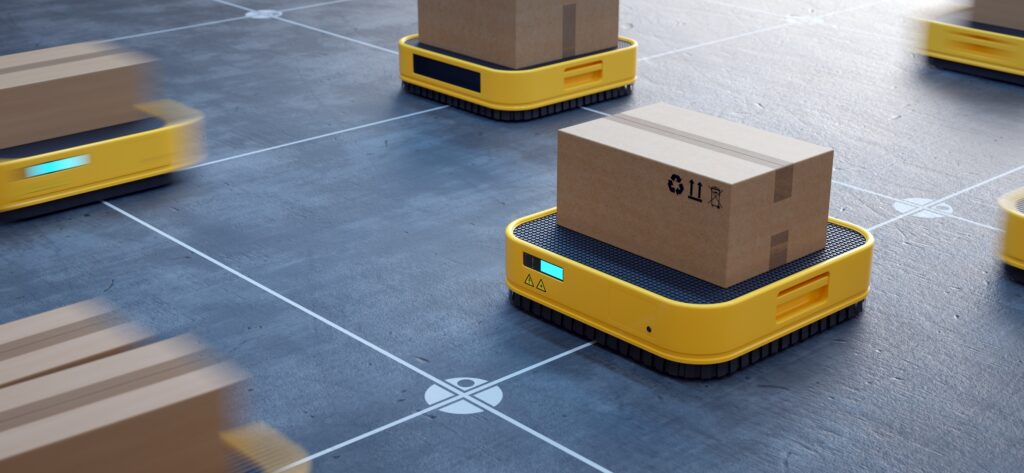Nearshore Breaking News: Legal Uncertainty, Slowing Forecasts, and Fashion’s Plea for Relief

Legal battles are now shaping trade policy as much as politics. This week, a federal appeals court temporarily allowed President Trump to continue imposing tariffs, even after the U.S. Court of International Trade ruled them illegal. As his team scrambles to craft a legally defensible backup plan, uncertainty continues to spill into markets. Major companies are revising forecasts, and industry leaders—from fashion to airlines—are urging Washington to consider the ripple effects. With negotiations hanging in the balance, the question isn’t just if tariffs will hold—but how long businesses can wait for clarity.
Nearshore News Summary:
- The U.S. Court of Appeals has temporarily allowed President Trump to continue imposing tariffs after a lower court found that his use of the International Emergency Economic Powers Act exceeded legal authority. (NYT)
- Following the court ruling that deemed President Trump’s emergency tariffs illegal, his administration is preparing a backup plan to keep tariffs and preserve its trade leverage. (WSJ)
- Major companies across retail, automotive, airlines, and logistics are pulling or lowering their earnings forecasts due to the volatility. (Business Insider)
- US fashion leaders meet with the White House to discuss tariff relief. (Vogue Business)
Federal Appeals Court Temporarily Spares Trump From Having to Wind Down Tariffs
Published: May 29, 2025
Source: NYT
A federal appeals court has temporarily allowed President Trump to continue imposing tariffs after a lower court ruled they were illegal under emergency economic powers. This pause gives the administration time to appeal the decision, likely to the Supreme Court. While not a final ruling, the stay preserves Trump's trade leverage for now and maintains uncertainty in ongoing global negotiations.
Key points:
- Appeals Court Grants Temporary Reprieve: The U.S. Court of Appeals paused a lower court’s order that would have forced the Trump administration to wind down tariffs imposed under emergency powers.
- Lower Court Ruled Tariffs Illegal: A bipartisan trade court found Trump’s sweeping use of the International Emergency Economic Powers Act exceeded legal authority, declaring the tariffs invalid.
- Supreme Court May Be Next: The Trump administration is pushing for the Supreme Court to intervene, framing the case as critical to preserving its trade strategy.
- Negotiations in Limbo: The ruling injected uncertainty into talks with over a dozen countries, with some leaders questioning why they should negotiate against a now-illegal threat.
- Tariff Tools Still Partially Intact: Other tariffs based on separate legal grounds (e.g., steel, aluminum) remain unaffected; even with a rollback, the U.S. would retain its highest tariff rate since 1969.
Trump’s Team Plots Plan B for Imposing Tariffs
Published: May 29, 2025
Source: WSJ
President Trump’s team is preparing a backup plan to preserve its trade leverage using other trade laws to keep duties in place. The proposed strategy would involve using two provisions of the Trade Act of 1974 to impose new tariffs—first, a short-term stopgap under Section 122, then longer-term, legally defensible tariffs under Section 301.
Key points:
- Plan B for Tariffs Underway: Trump’s team is preparing to use Section 122 of the Trade Act of 1974 for temporary tariffs and Section 301 for longer-term measures, in case the court appeal over emergency powers fails.
- Court Challenges Spark Strategy Shift: A federal court ruled Trump's use of the International Emergency Economic Powers Act (IEEPA) illegal for broad tariffs; the administration is appealing but preparing alternatives.
- Legal Path Seen as More Defensible: Experts say Sections 122 and 301 have clearer legal precedent, making them more likely to survive court challenges than the IEEPA-based approach.
- Tariff Continuity Preserves Negotiation Leverage: A pivot to other laws could ensure uninterrupted tariffs, maintaining U.S. leverage in sensitive trade talks with the EU and other nations.
- EU Sees Opening for Deal: European officials hope the legal setback softens the U.S. stance, potentially removing blanket tariffs and focusing instead on resolving sector-specific disputes.
Best Buy joins Macy's and a rising number of companies lowering or ditching guidance amid tariff chaos. Here's the list.
Published: May 29, 2025
Source: Business Insider
Major companies across retail, automotive, airlines, and logistics are pulling or lowering their earnings forecasts due to the volatility caused by President Trump’s tariffs. From Best Buy and GM to UPS and American Airlines, firms cite macroeconomic uncertainty, rising costs, and unpredictable consumer behavior as reasons for the shift.
Key points:
- Guidance Withdrawals Across Industries: Companies including Best Buy, GM, UPS, Delta, Ford, and Procter & Gamble have either lowered or entirely pulled their financial guidance for 2025.
- Tariffs as a Central Disruption: Trump's sweeping tariffs—and legal uncertainty following court rulings—have made forecasting difficult, with firms warning of cost increases and demand shifts.
- Retail and Consumer Goods Hit Hard: Brands like Macy’s, American Eagle, and Chipotle reported declining consumer spending and rising input costs, some resorting to price hikes as a last resort.
- Airlines Brace for Demand Uncertainty: Carriers such as United, Delta, and JetBlue issued dual or suspended guidance, citing economic unpredictability and declining travel demand.
- Automakers Sound the Alarm: GM, Ford, Stellantis, and Mercedes-Benz are scaling back projections, warning that tariffs could wipe out profits or cost billions in added expenses.
US fashion leaders meet with the White House to discuss tariff relief
Published: May 29, 2025
Source: Vogue Business
Anna Wintour, global editorial director of Vogue and chief content officer of Condé Nast, Steven Kolb, CEO of the Council of Fashion Designers of America (CFDA), and Stephen Lamar, president and CEO of the American Apparel & Footwear Association (AAFA) met with the White House Chief of Staff to discuss the disproportionate impact of tariffs on the $500 billion U.S. fashion industry, calling for fairness and warning of rising instability and economic harm.
Key points:
- Beyond Manufacturing: Trump emphasized tariffs were focused on tech, not fashion. Industry leaders countered that fashion’s cultural and economic value extends beyond domestic manufacturing.
- Industry Scale & Impact: Wintour, Kolb and Lamar addressed the scale and impact of the $500 billion US fashion industry, which supports 10 million jobs across design, retail, media, live events and manufacturing.
- Disproportionate Tariff Burden: Fashion makes up 5% of imports but pays over 25% of total duties—existing tariffs on apparel average 12.6%.
- Call for Fairness: Leaders urged the White House not to layer additional tariffs on an already heavily taxed industry, arguing it would deepen competitive disadvantage.
- Uncertainty from Policy Swings: Recent tariff announcements, blocks, and reversals—including a now-paused 50% EU tariff—have left fashion brands struggling with pricing and planning.
More blogs


